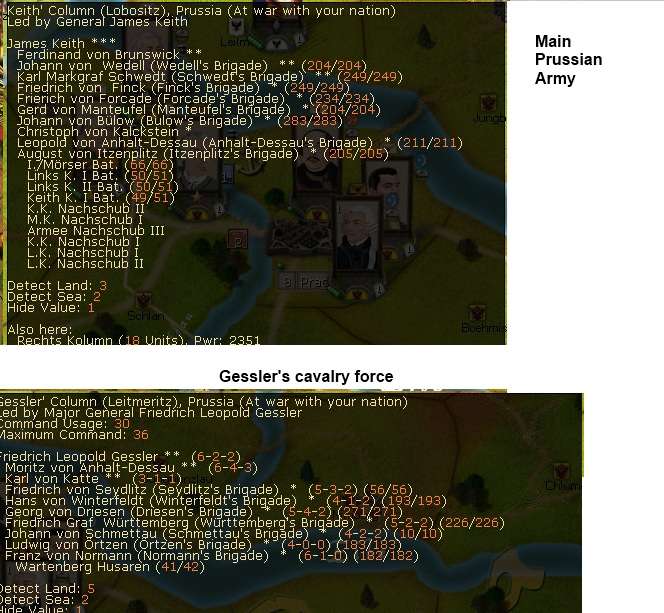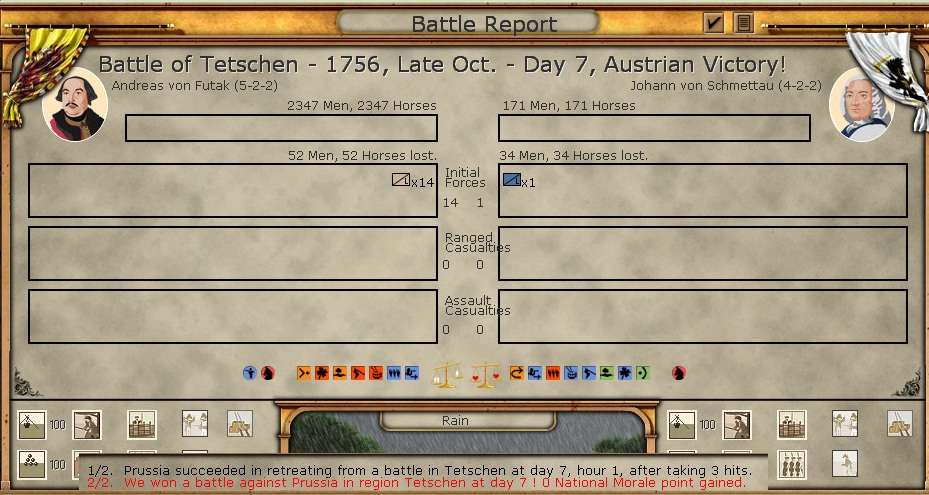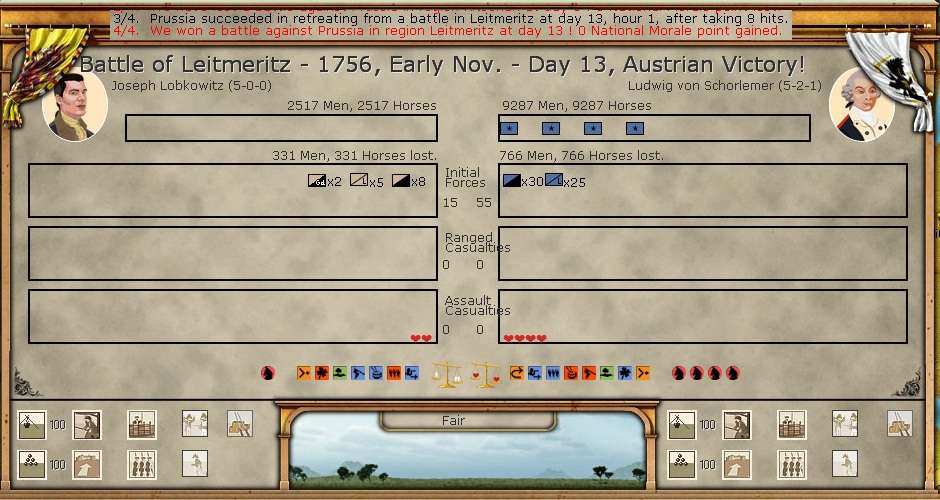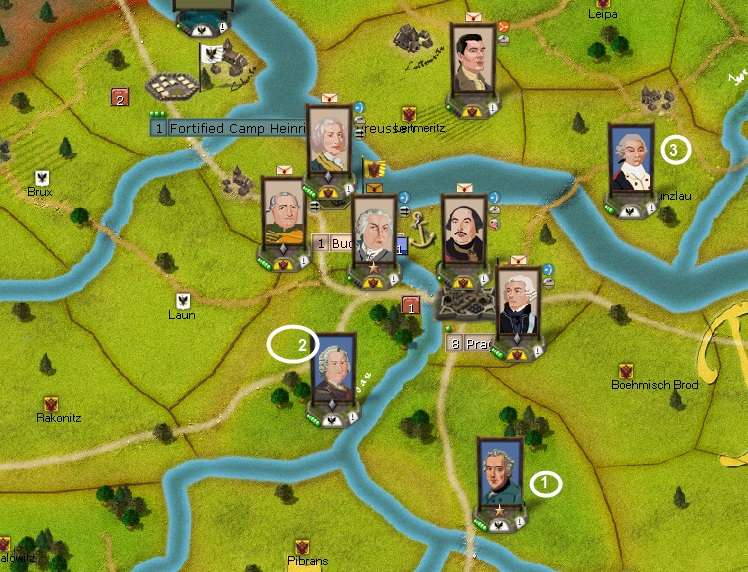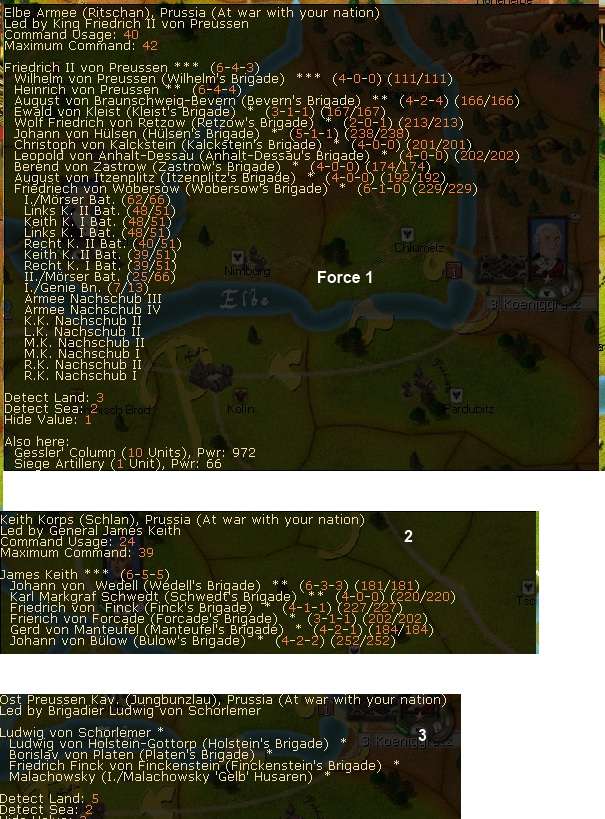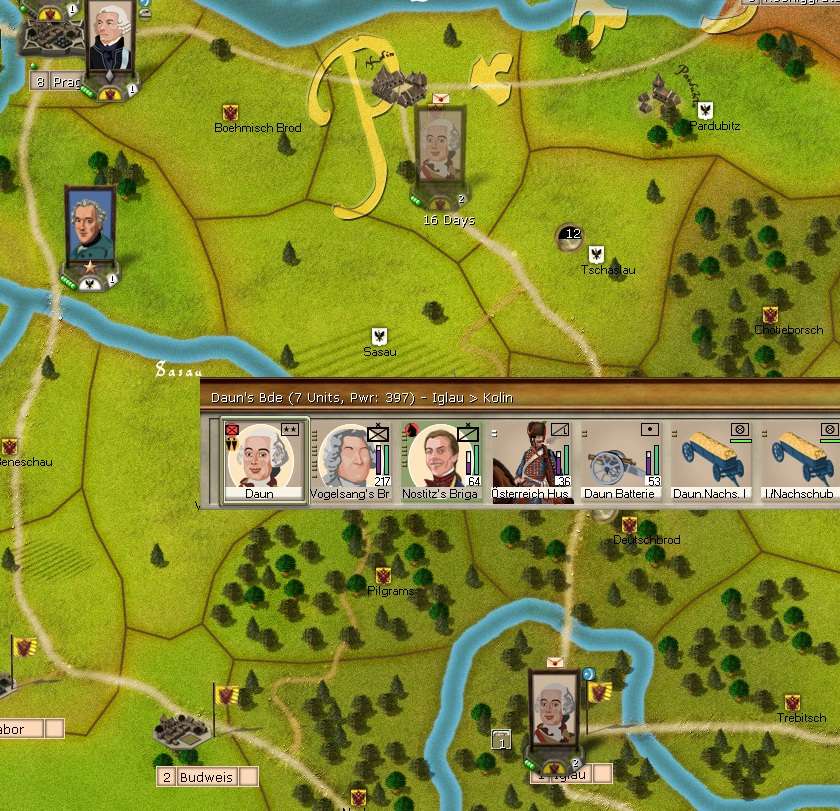The First Battle of Prag, 19 November 1756

Prussian OOB (Narwhal supplied this information)
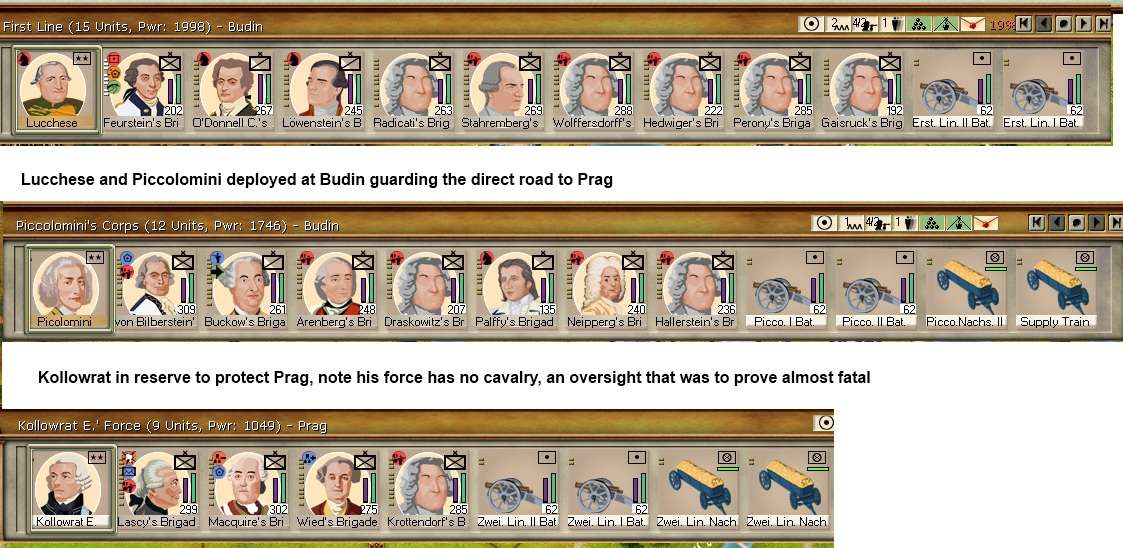
Austrian OOB
The clash at Prag on 19 November 1756 was the first major action of the war involving some 110,000 men and almost 700 cannon. By the end of the day 32,000 had fallen on the field of battle.
When news reached Browne that Frederick had not only bypassed his position at Borun but that his main army was to the south of Prag it appeared that all was lost. All that stood between 70,000 Prussians and Prag was Kollowrat's relatively weak corps. Browne, Lucchese and Piccolomini had little choice but to race to join him. However, the Prussians had a similar problem in that Keith's column had lagged behind, and it was not till the early hours of 19 November that the Prussian army assembled and moved forward under the cover of darkness.

Just after 9am on the short winter's day, Frederick himself, leading the main Elbe army with 35,000 men, fell on Kollowrat's 4 brigades (10,000 men) backed by a huge advantage in artillery. However, Kollowrat had had some time to prepare his positions, with his units dug in and making use of the various stone farmhouses of this prosperous region of Bohemia. With the first rains of winter falling, the Prussian advance was disrupted by mud and the prepared defenses.

(Prussian infantry attacking a fortified farm house)
Equally he was aware that the cavalry advance guards of Piccolomini and Lucchese were almost in position.
His deployment had put Wied and Krottendorf's brigade in the front with Lascy covering the left flank and Macquire left in reserve. Both his lead brigades suffered 25% casualties in the opening salvos and fell back in disorder, however, their staunch resistance led to Itzenplitz's brigade losing its momentum, allowing Kollowrat to throw in his reserves. More dangerously he opted to shorten his lines in an attempt to stall the Prussian attack that threatened to drive straight through his lines.
By 10am, he had held, but only just and 25% of his corps were dead or dieing as the Prussians regrouped. Even worse, the Prussian cavalry was steadily moving to flank his position and Keith's corps was extending the main Prussian battle line.
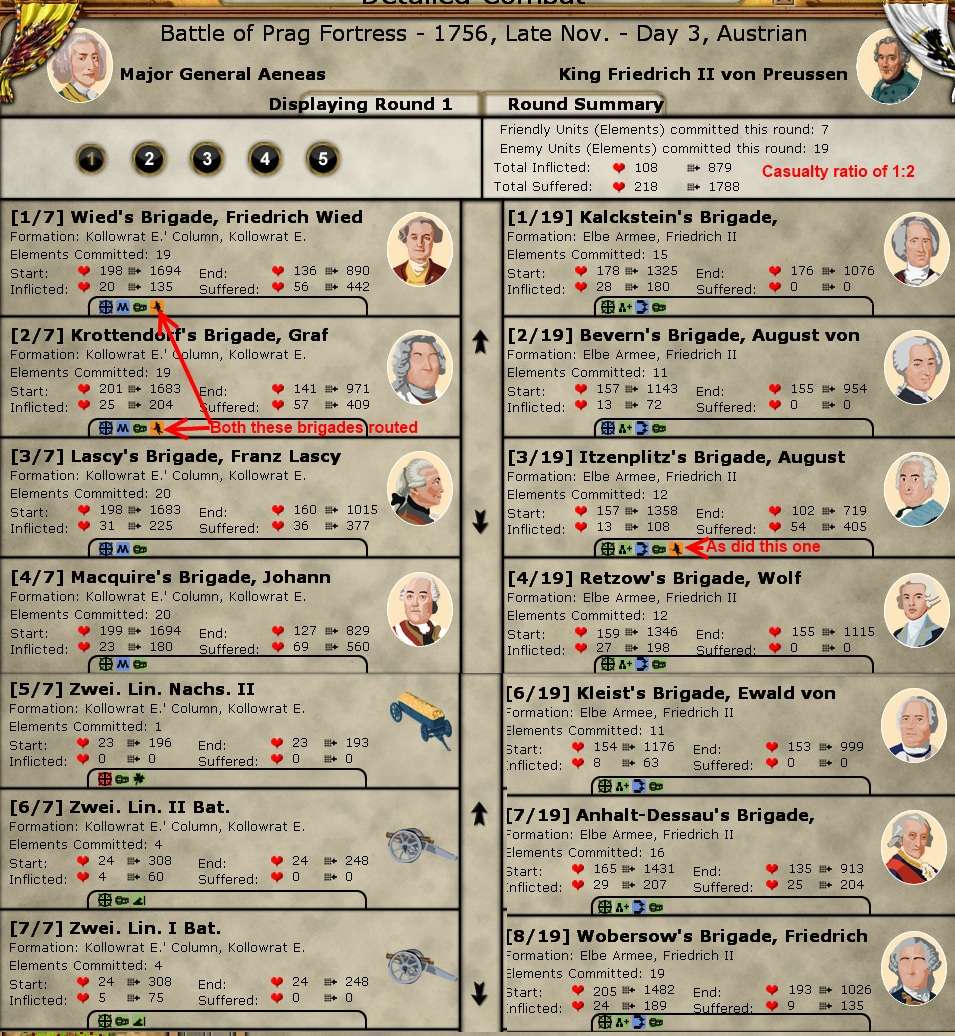
(detailed report on the opening round of combat)
However, Browne had anticipated this outcome and had ordered both Piccolomini and Lucchese to combine their heavy cavalry as they moved up. 4 Brigades of Cuirassiers and Dragoons (O'Donnel and Lowenstein from Lucchese's left flank and Buckow and Paiffy from Piccolomini) struck the advancing Prussians. The result was carnage, but it also bought critcal time. Almost 40% of the Austrian cavalry failed to return but the outcome was that the Prussian assualt lost momentum at a critical stage of the battle.

By 11am, the Austrian line had been driven in, but two fresh corps had had chance to deploy into line of battle.
The rest of the battle was a brutal clash between the two armies. Steadily the Austrians gave ground and by 12am some of Kollowrat's opening brigades were down to less than 400 men. It helped the Austrians that the Prussians switched their main target from Piccolomini to Lucchese as the day wore on, allowing weakened and shattered battalions a chance to reform and regroup.
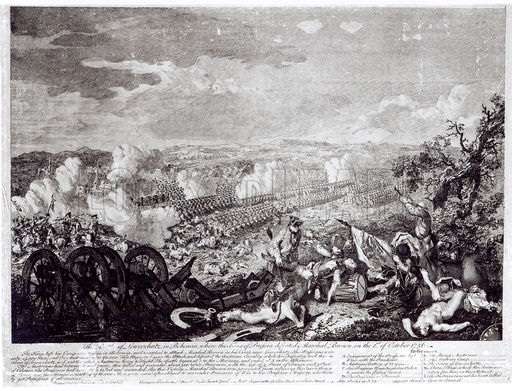
(Main phase of the battle)
By 2pm the Prussians launched a last all out attack across the line. However, the losses were becoming more even (1000 Austrians for 800 Prussians) as they too lost their combat discipline on the battlefield churned up by shells and littered with the dead and dieing. With the short winter day fading, and at the point of victory, they fell back. It was possible that either the fierce Austrian resistance at the end convinced them that Daun had arrived (when in reality he had returned to Iglau) or that they expected the Austrians to flee and wished to avoid further losses.
As the Prussians fell back, the first snows of winter started to fall, giving the battlefield, with its a dreadfull scenes of carnage, an almost peaceful air. The cruel reality was the dropping temperature worsened the agonies of the many who lay wounded, adding the possibility of freezing to death to their sufferings.
The next morning Browne, re-organised his battle lines pulling Kollowrat's shattered column back into the city as an emergency garrison.
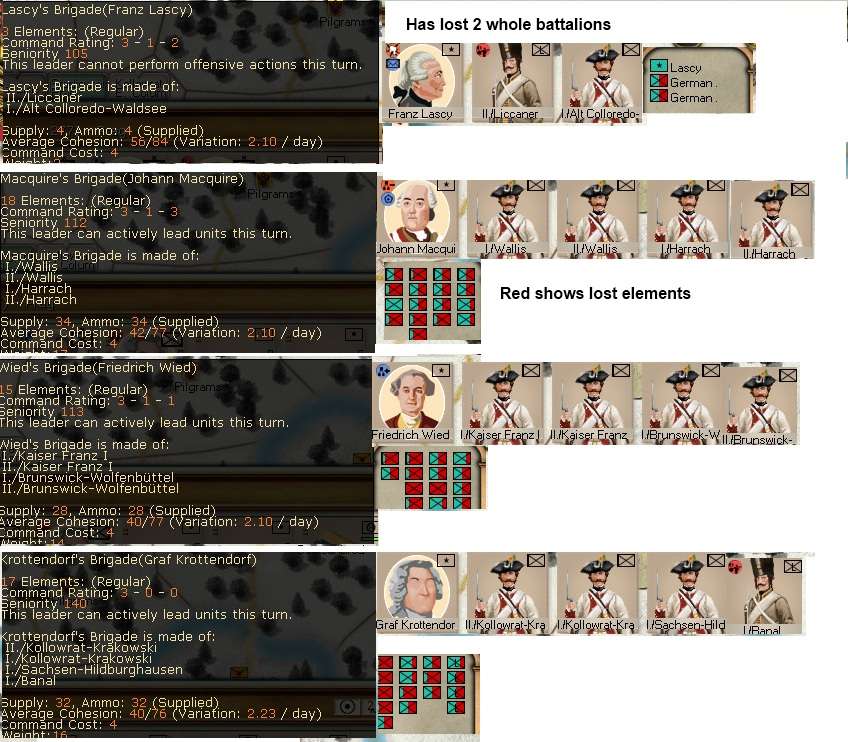
(Kollowrat's corp at the end of the battle, over 50% of the original force had fallen)
The other two took up positions on the original Austrian front line expecting a renewed Prussian attack. When this didn't come, men were detached to gather together the dead and to bring the wounded back to the makeshift field hospitals. After the horror of the 19th, it was somehow appropriate that Prussian, Saxon, Austrian, Hungarian and Croat were treated as one.
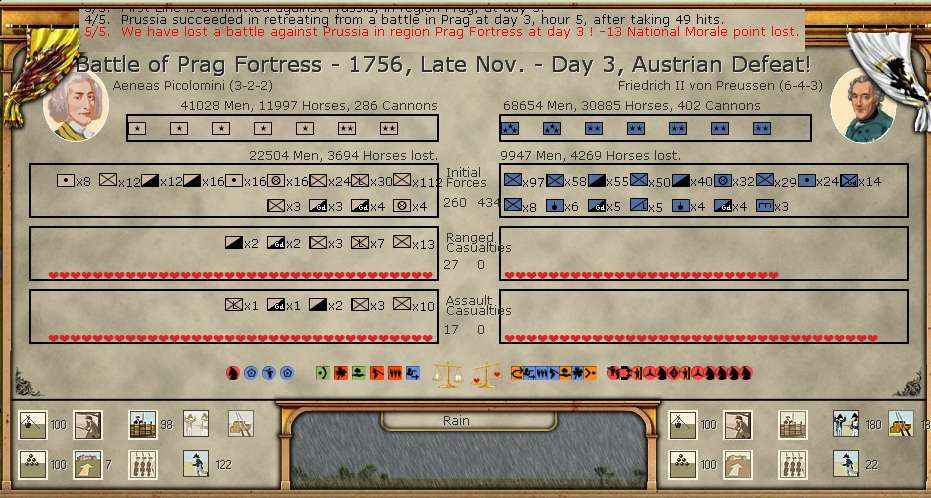
(the outcome of the battle)



